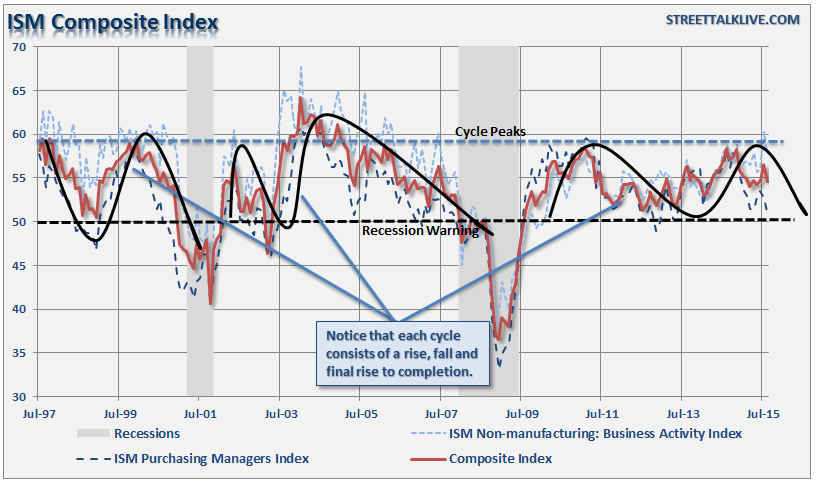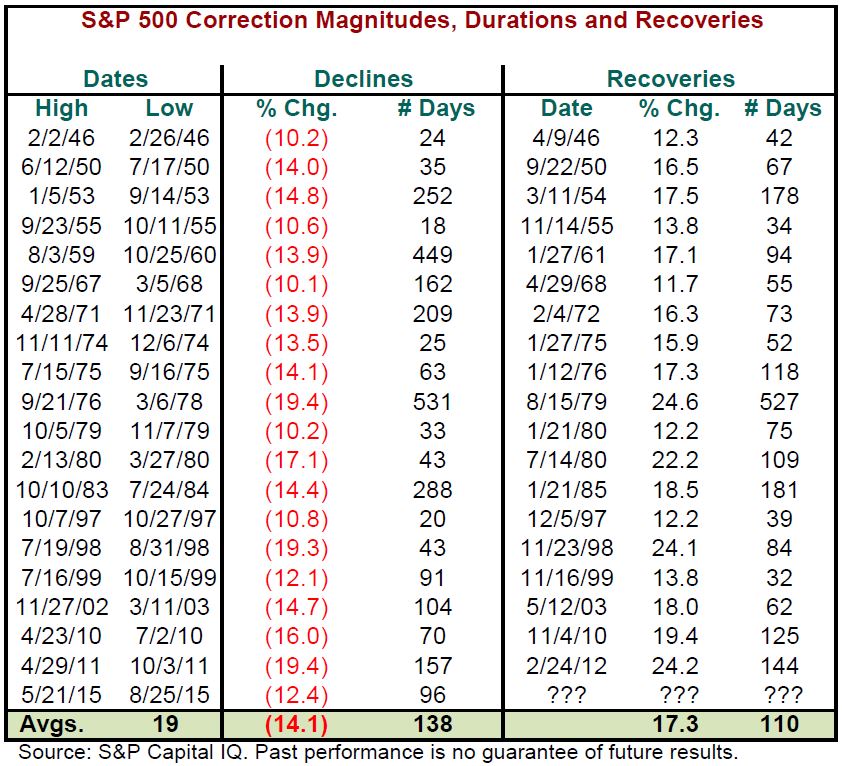Could Additional ECB QE Cure The US Market
This morning the European Central Bank (ECB) seemed forced to "do something" given the recent market weakness. With inflation expectations collapsing, markets declining and economic growth weak, the best hope for market "bulls" at the moment was an expansion of the ECB's current QE program.
Mario Draghi, head of the ECB, did not fail to deliver by increasing the share limit for QE from 25% to 33% (the size of the program was NOT increased). However, ironically, they also cut inflation forecasts for 2015-2017. I say ironically because the QE program is specifically meant to drive inflation towards to the magical 2% mark.
The question is whether an expansion the current QE program will have any real impact on the markets, inflation or economic growth?
It was just six months ago that the ECB launched their initial quantitative easing program to much fanfare and hopes of a swift economic recovery. So far, results have been disappointing. As noted by The Economist:
"GDP in the second quarter of 2015 from Eurostat are disappointing. The consensus among economists was that the 19-strong currency club would grow by 0.4%, the same as in the first quarter. Instead the pace of quarterly growth slowed a little, to 0.3%, leaving output 1.2% higher than a year ago."
Inflation has also been non-existent despite the ECB's monetary interventions. Consumer prices in the Eurozone are barely higher than now than a year ago. As stated above, at just 0.2% currently, the ECB has a long way to go, as does the Federal Reserve, to reach target levels of 2%.
However, for investors, it is the potential impact of additional ECB QE on the domestic markets that counts. The problem is that all QE programs are not equal. As shown in the chart below, I have noted the Fed's QE programs and the effect on domestic markets and the ECB's program.
It is clear that the expansion of the Fed's balance sheet, and the subsequent boost to bank reserves, led to immediate impacts to asset prices. When the programs ended, asset prices struggled. As noted, the ECB's current QE program has had little effect on boosting domestic asset prices due to the lack of increase in domestic liquidity.
While the ECB's action may stabilize the markets temporarily, it seems unlikely that this action will reverse the current negative trends and momentum in the markets.
ISM Defies Economic Strength Hopes
One of the most watched economic reports, besides the monthly employment report, is the Institute of Supply Management (ISM) Manufacturing and Services indices. Currently, there is a very interesting divergence going on between the two with services showing strength while manufacturing wanes. Since both measures are historically correlated, such divergences tend not to last indefinitely.
However, since what we are after is a view of the health of the overall economy, we can combine the two into a single index to see the overall trend.
As I have shown, the composite ISM index has a history of cyclical rebounds and declines primarily driven by inventory restocking cycles caused by the ebb and flow of the real economy.
Such a rebound cycle was witnessed during the 2nd quarter of 2015, as inventories were replenished following the exceptionally cold winter season. While pundits were ecstatic over the 3.7% print of GDP in the second quarter, the ISM composite currently suggests the manufacturing rebound has likely concluded. As such, Q3 GDP will likely print well below 2% in the months ahead.
We can find further confirmation of that suggestion by looking at core durable goods, which excludes aircraft and defense spending.
The most recent report on core durable goods suggests that future ISM reports will likely remain weak and with winter fast approaching puts already weak economic growth at risk.
Is It Over Yet?
It is THE question that is on every investor's mind right now; is the correction over yet? The honest answer is that no one really knows. However, from a technical perspective my suspicion is that current market volatility is likely to be with us for quite some time longer.
I discussed earlier this week, the technical backdrop of the market currently stating:
"For the first time since 2000 or 2007, the market has now registered a momentum based 'sell' signal. Importantly, this is a very different reading that what was seen during the 2010 and 2011 'corrections' and suggests the current correction may be more significant.
The chart also confirmed by numerous other indications that also support the 'mark of the bear.'"
While the rebound over the last two days were certainly welcome, I have suggested over the past two weeks to continue raising cash during such opportunities. The reason is that while August was indeed a weak month, statistically speaking September has often been worse.
As my friend Anora Mahmudova pointed out recently:
"In the 11 instances since 1945 when the S&P 500 fell more than 5% in August, September returns were negative 80% of the time, averaging a decline of 4%, said Sam Stovall, U.S. equity strategist at S&P Capital IQ. History is a good guide, but not necessarily a gospel"
"The correction we've had so far, if we assume that was the bottom, was too shallow by historical standards. Especially if you consider that it was the first 10% correction in 44 months. The median decline after going more than 30 months since the prior decline in excess of 10% was 19.9%," Stovall said."
With earnings declining, economic growth forecasts weak and many mutual funds needing to rebalance portfolios as the end of the quarter approaches, there is sufficient pressure to push stocks lower in the weeks ahead.
The REAL RISK currently is not missing some of the upside if the bull market does begin to resume, but rather catching the downside if this correction turns into a full-fledged bear.
Just some things worth thinking about.





